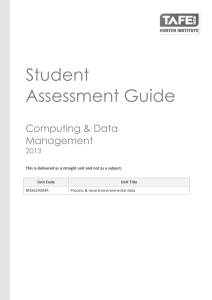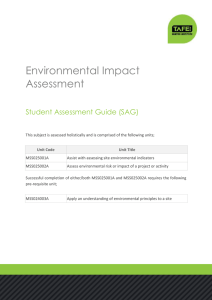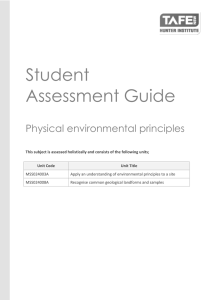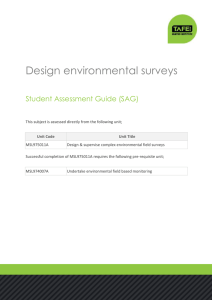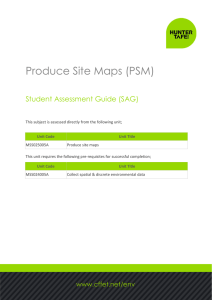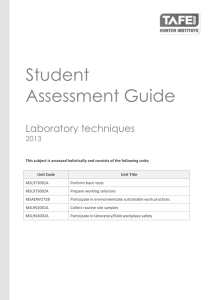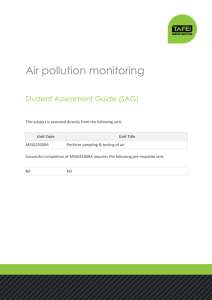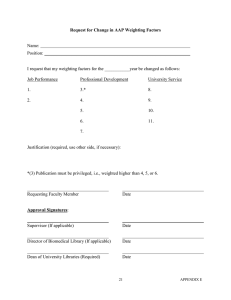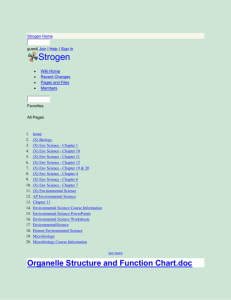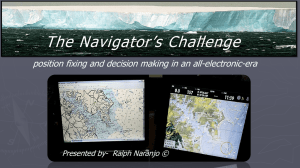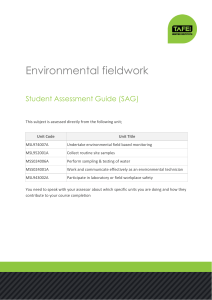Student Assessment Guide Navigation & Mapping
advertisement
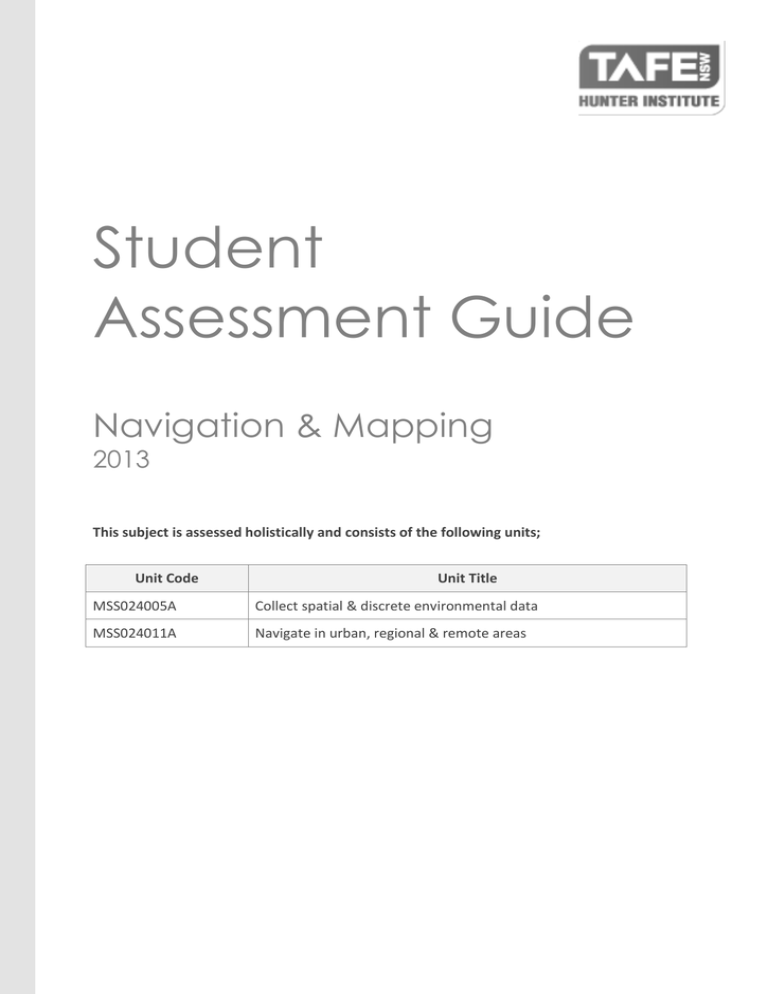
Student Assessment Guide Navigation & Mapping 2013 This subject is assessed holistically and consists of the following units; Unit Code Unit Title MSS024005A Collect spatial & discrete environmental data MSS024011A Navigate in urban, regional & remote areas Navigation & Mapping SAG Subject Purpose This subject covers the ability to covers the ability to obtain and store spatial and discrete environmental data using handheld global positioning system (GPS) equipment, to read and interpret maps, plans and photos to locate position and navigate safe and efficient routes to urban and regional/remote destinations. Assessment Assessment for this subject will consist of a project based portfolio of evidence constructed from specific tasks spread out throughout the subject duration that will result in the following items; Using a GPS, including marking points, routing, and data collection Producing a navigational plan for specific fieldwork events Completing a variety of formative assessment tools throughout the course The assessment weighting for each component will be as follows; Assessment Task Weighting GPS Competency 30% Navigation Plan 30% Formative assessments 40% TOTAL 100% Subject content This subject deals with a wide variety of navigational and GIS topics, including the following aspects; Datum’s and reference systems Geographic coordinate systems Map projection Universal Transverse Mercator Mapping systems used in Australia old AGM and new MGA) Topographic maps Measuring map aspects such as distance, elevation profiles and times Compass and maps in use together Chemical, Forensic, Food & Environmental Technology [cffet.net/env] Version 1.0 22/04/2013 Page | 1 Navigation & Mapping SAG GPS theory and practice These aspects will be performed using the following tools; Computers with internet Flash or thumb drives General office computing software including; o Spreadsheets o Word processors o Databases o Presentation software Grading The assessment for this unit/ module is recorded as a Class Mark. All assessment events used to determine your result will be locally set and locally marked. Your results will be reported as DISTINCTION, CREDIT, PASS or FAIL. To receive a particular grade you must get at least the mark shown below: Grade Class mark DISTINCTION 83% CREDIT 70% PASS 50% FAIL <50% Delivery strategy This subject employs holistic delivery strategies and has been designed to include the components of two units of study (MSS024005A & MSS024011A). Holistic delivery strategies require unit mapping to explain how the units are related to the subject. Outlined below is the unit map for this subject which is derived from the Unit Guides. Elements Performance Criteria Subject Weighting Unit Weighting MSS024005A All All 50% 100% MSS024011A All All 50% 100% Unit NOTE: The subject weighting MUST add up to 100 for the subject, but the Unit Weighting MAY NOT add up to 100 as each unit is weighted differently in each subject it is used in. Refer to cffet.net/env/assessment for further explanation. Chemical, Forensic, Food & Environmental Technology [cffet.net/env] Version 1.0 22/04/2013 Page | 2 Navigation & Mapping SAG What you will need To complete this subject successfully you will need; A USB flash or thumb drive. Access to a computer with internet Administrator rights to download and install free programs would help Where to get help Contact your teacher if you run into any trouble this unit. You would be surprised how flexible we are at accommodating your needs, but communication is key. If you don’t let us know you are having trouble, we may have trouble trying to help you. Resources and references More about assessment You can access more information about assessment from the following two sites; http://www.tafensw.edu.au/courses/about/assessment_guide.htm http://www.cffet.net/env/assessment Resources Learner resource Navigation-Spreadsheet.xlsx http://cffet.net/env/nav Geoscience Australia website Submission Students are to submit all assessments by the due date to the subject teacher by email using the following filename format; firstname-surname-assessmentname-duedate Visit cffet.net/env/assessment for more information on submitting assessments, file names and available file extensions that you can use. References You are not expected to purchase these resources, they are provided for interest only. Note that the list below may not be complete, and that some of these resources might be available from your teacher or library. Australia, G. (2005). Map Reading Guide: How to Read Topographic Maps. Canberra: Geoscience Australia. El-Rabbany, A. (2002). Introduction to GPS: The Global Positioning System. London: Artech House. Chemical, Forensic, Food & Environmental Technology [cffet.net/env] Version 1.0 22/04/2013 Page | 3 Navigation & Mapping SAG Jones, A. (1999). Where in the World are We. Adelaide: Government of South Australia. Kjellstrom, B. (2010). Be Expert with Map and Compass: The Complete Orienteering Handbook, 3rd Ed. New Jersey: John Wiley & Sons. Sutton, T. E. (2009). A Gentle Introduction to GIS. Eastern Cape: Quantum GIS. Touche, F. (2005). Wilderness Navigation Handbook. Canada: Friesens Corporation. Chemical, Forensic, Food & Environmental Technology [cffet.net/env] Version 1.0 22/04/2013 Page | 4
